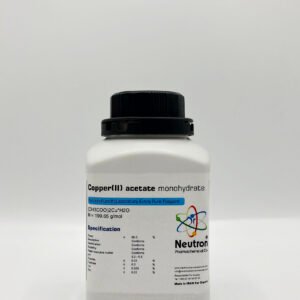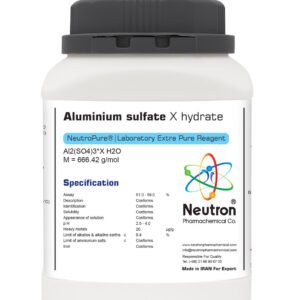Cobalt (ii) nitrate hexahydrate
| Formula: | CoN2O6*6 H2O |
| Chemical formula: | Co(NO3)2*6 H2O |
| Density: | 1.87 g/cm3 (20 °C) |
| Molar mass: | 291.04 g/mol |
| Bulk density: | ~800 kg/m3 |
| CAS number: | 10026 – 22 – 9 |
| HS code: | 28342920 |
| EC number: | 233 – 402 -1 |
| Storage (temperature): | Without limitations. |
| SDS | available |
| RTECS: | QU7355500 |
| R phrase: | R 22- 40 – 43 |
| S phrase: | S 36/37 |
| Odour: | Weak |
| Form: | solid |
| Color: | reddish – brwn |
| pH value: | ~4.0 (100 g/l 20 °C) |
| Solubility in water: | 1330 g/l (0 °C) |
| Melting point: | 57 °C |
| Thermal decomposition: | >74 °C |
| Assay | ≥ | 97 | % |
| Description | Conforms | ||
| Solubility | Conforms | ||
| Identification | Conforms | ||
| pH | ~ | 4 | |
| Chloride | ≤ | 0/005 | % |
| Sulphate | ≤ | 0/02 | % |
| Nickel | ≤ | 0/3 | % |
| Iron | ≤ | 0/01 | % |
Cobalt(II) nitrate hexahydrate is a reddish crystalline solid that is highly soluble in water and commonly used in chemical synthesis, catalysis, and as a precursor for other cobalt compounds. It typically appears as large, red or pink crystals due to its hydration state.
🏭⚗️ Production
Cobalt(II) nitrate hexahydrate is usually produced by dissolving cobalt metal, cobalt oxide, or cobalt carbonate in nitric acid, followed by crystallization of the hexahydrate salt. The process involves careful control of temperature and concentration to obtain high-purity crystals suitable for laboratory and industrial use.
🔬 Properties
The chemical formula of cobalt(II) nitrate hexahydrate is Co(NO₃)₂·6H₂O, and its molar mass is approximately 291.03 g/mol. This compound appears as red to pink crystalline solid with a characteristic bright color. It is highly soluble in water, forming clear pink solutions. The hexahydrate form contains six molecules of water coordinated to the cobalt nitrate, which can be lost upon heating, resulting in anhydrous cobalt nitrate. It is hygroscopic and may absorb moisture from the air.
🧪 Applications
Cobalt(II) nitrate hexahydrate is widely used as a precursor for preparing cobalt catalysts in hydrogenation and oxidation reactions. It is also employed in the synthesis of ceramic pigments, battery materials, and electroplating baths. In research laboratories, it serves as a source of cobalt ions (Co²⁺) for coordination chemistry and material science studies. Additionally, it is used in the preparation of cobalt-based magnetic materials and sensors.
⚠️ Safety
Cobalt(II) nitrate hexahydrate should be handled with caution as it can cause irritation to the skin, eyes, and respiratory tract. Prolonged or repeated exposure may lead to sensitization and allergic reactions. The compound is harmful if swallowed or inhaled, and cobalt compounds are considered possible carcinogens. It is important to use appropriate personal protective equipment such as gloves, safety goggles, and lab coats when handling this chemical. Storage should be in a tightly sealed container, in a cool, dry, and well-ventilated place, away from incompatible substances like strong reducing agents and organic materials.





